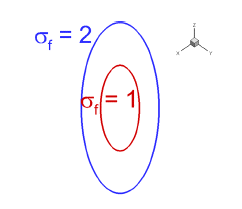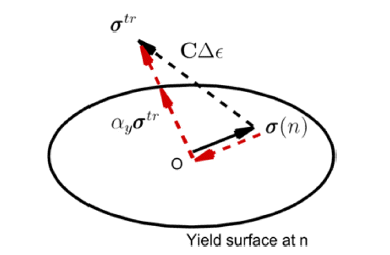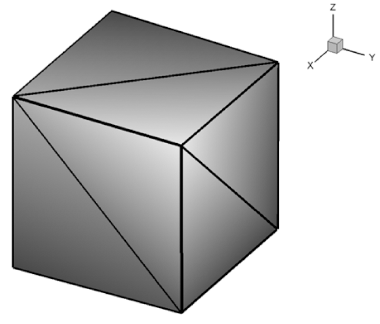- [Korean]
- Fixed-point Iteration for the Plastic Deformation Analysis of Anisotropic Materials
-
Seung-Yong Yang, Jeoung Han Kim
-
J Powder Mater. 2023;30(1):29-34. Published online February 1, 2023
-
DOI: https://doi.org/10.4150/KPMI.2023.30.1.29
-
-
 Abstract Abstract
 PDF PDF
A fixed-point iteration is proposed to integrate the stress and state variables in the incremental analysis of plastic deformation. The Conventional Newton–Raphson method requires a second-order derivative of the yield function to generate a complicated code, and the convergence cannot be guaranteed beforehand. The proposed fixed-point iteration does not require a second-order derivative of the yield function, and convergence is ensured for a given strain increment. The fixed-point iteration is easier to implement, and the computational time is shortened compared with the Newton–Raphson method. The plane-stress condition is considered for the biaxial loading conditions to confirm the convergence of the fixed-point iteration. 3-dimensional tensile specimen is considered to compare the computational times in the ABAQUS/explicit finite element analysis.
- [Korean]
- Analysis of Anisotropic Plasticity of Additively Manufactured Structure using Modified Return Mapping Method
-
Seung-Yong Yang, Doo-Han Jin, Jeoung-Han Kim
-
J Powder Mater. 2022;29(4):303-308. Published online August 1, 2022
-
DOI: https://doi.org/10.4150/KPMI.2022.29.4.303
-
-
 Abstract Abstract
 PDF PDF
The plastic deformation behavior of additively manufactured anisotropic structures are analyzed using the finite element method (FEM). Hill’s quadratic anisotropic yield function is used, and a modified return-mapping method based on dual potential is presented. The plane stress biaxial loading condition is considered to investigate the number of iterations required for the convergence of the Newton-Raphson method during plastic deformation analysis. In this study, incompressible plastic deformation is considered, and the associated flow rule is assumed. The modified returnmapping method is implemented using the ABAQUS UMAT subroutine and effective in reducing the number of iterations in the Newton-Raphson method. The anisotropic tensile behavior is computed using the 3-dimensional FEM for two tensile specimens manufactured along orthogonal additive directions.
- [Korean]
- Computation of Stress Field During Additive Manufacturing by Explicit Finite Element Method
-
Seung-Yong Yang, Jeoung Han Kim
-
J Korean Powder Metall Inst. 2020;27(4):318-324. Published online August 1, 2020
-
DOI: https://doi.org/10.4150/KPMI.2020.27.4.318
-
-
684
View
-
3
Download
-
1
Citations
-
 Abstract Abstract
 PDF PDF
In the present work, an explicit finite element analysis technique is introduced to analyze the thermal stress fields present in the additive manufacturing process. To this purpose, a finite element matrix formulation is derived from the equations of motion and continuity. The developed code, NET3D, is then applied to various sample problems including thermal stress development. The application of heat to an inclusion from an external source establishes an initial temperature from which heat flows to the surrounding body in the sample problems. The development of thermal stress due to the mismatch between the thermal strains is analyzed. As mass scaling can be used to shorten the computation time of explicit analysis, a mass scaling of 108 is employed here, which yields almost identical results to the quasi-static results. -
Citations
Citations to this article as recorded by  - Stress-Induced Deformation of Thin Copper Substrate in Double-Sided Lapping
Jiang Guo, Zengxu He, Bo Pan, Bin Wang, Qian Bai, Jinxing Kong, Renke Kang
Chinese Journal of Mechanical Engineering.2023;[Epub] CrossRef
|





